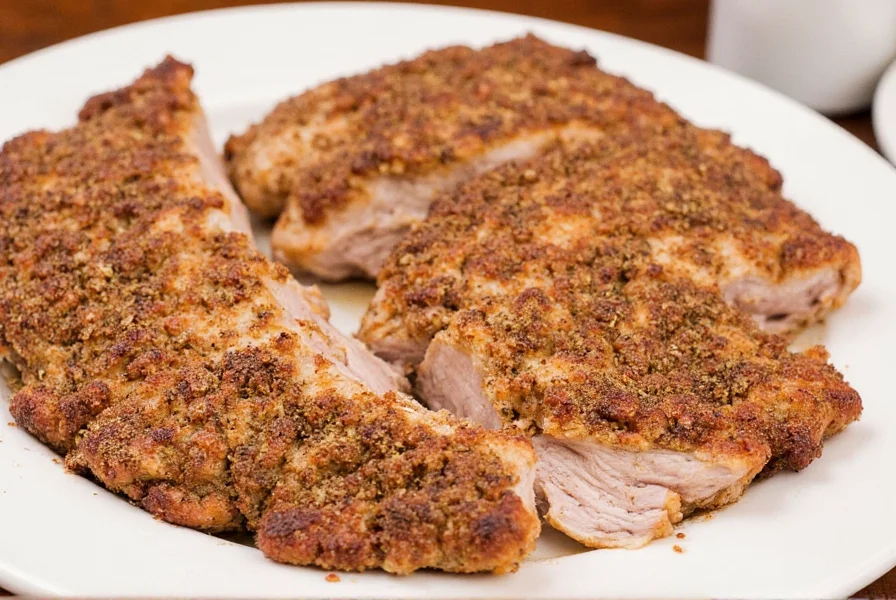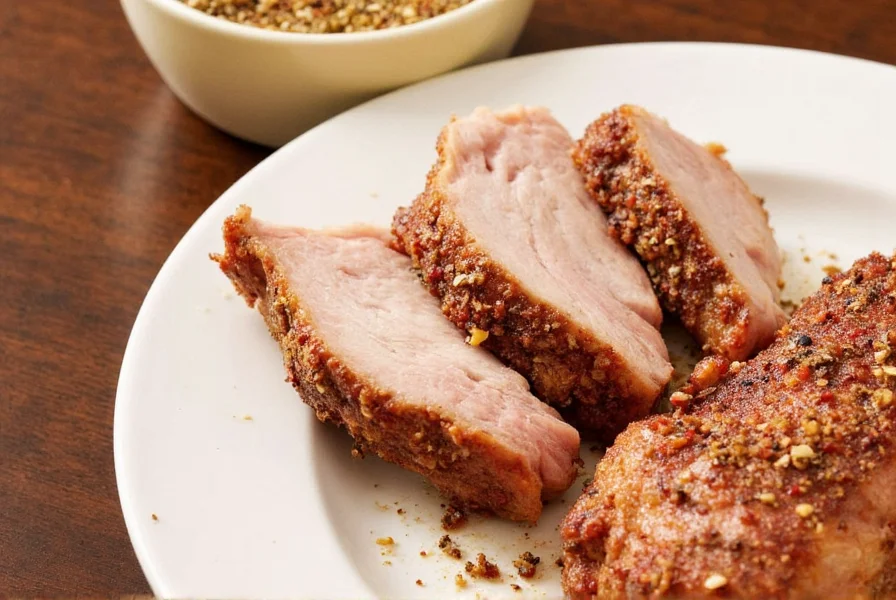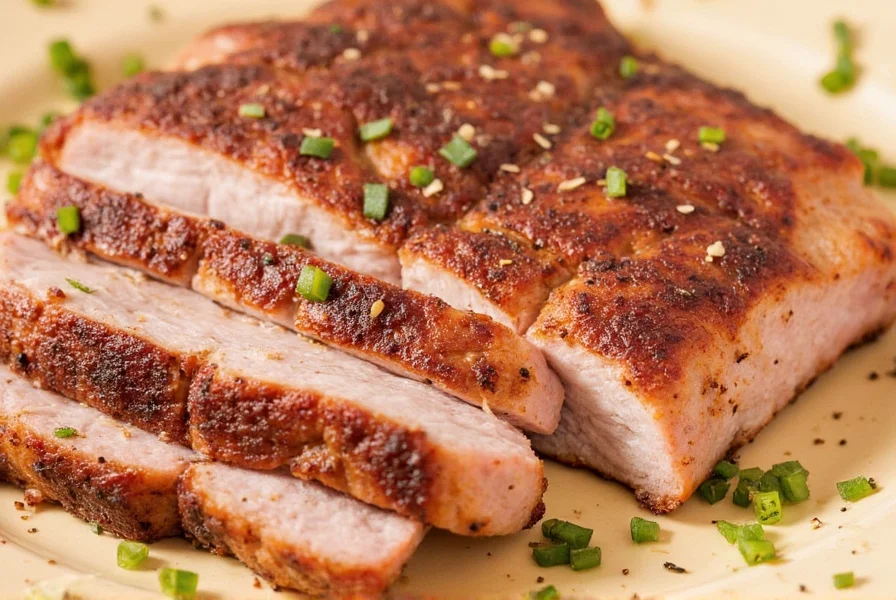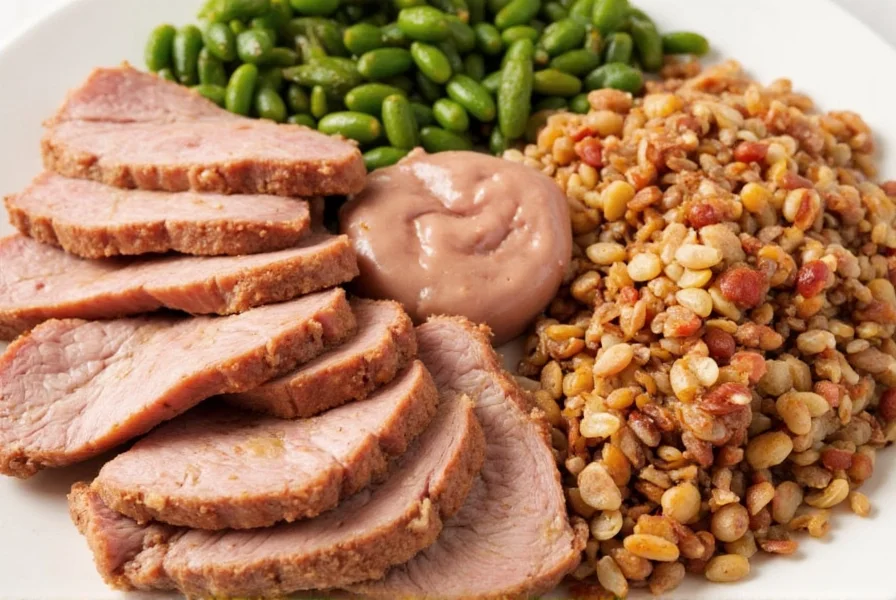How to Season Pork: A Complete Guide for Perfect Flavor
Mastering pork seasoning transforms ordinary meals into extraordinary dishes. This step-by-step guide reveals exactly how to choose, apply, and combine spices for every cut of pork—from tenderloin to belly—ensuring maximum flavor and texture. Whether you're grilling, roasting, or stir-frying, these expert techniques will elevate your cooking instantly.

Why Proper Seasoning Matters for Pork
Pork's mild flavor makes it a versatile canvas, but without strategic seasoning, it can taste bland. The right spices don't just add heat—they unlock sweetness, depth, and complexity while complementing each cut's natural texture. Lean cuts like tenderloin need delicate herbs to avoid overpowering, while fatty cuts like shoulder thrive under bold rubs. Understanding these principles ensures every bite delivers exceptional flavor.
How Spices Transform Pork
- Enhance natural flavor: Herbs like thyme and rosemary highlight pork's subtle sweetness without masking it.
- Add depth: Smoked paprika or cumin creates rich, earthy layers that penetrate deep into the meat.
- Introduce heat: Cayenne or chili powder adds controlled spice that balances richness in fatty cuts.
- Build texture: Coarse salt and cracked peppercorns create a flavorful crust when seared or grilled.
Top 7 Spices for Seasoning Pork
| Spice | Flavor Profile | Best Used With | Popular Dishes |
|---|---|---|---|
| Cumin | Earthy, nutty, warm | Marinades, dry rubs | Mexican carnitas, Moroccan tagines |
| Smoked Paprika | Smoky, sweet, slightly spicy | Grilling, roasting | Spanish-style ribs, smoked pork shoulder |
| Rosemary | Fragrant, pine-like, herbal | Roasts, slow-cooked dishes | Herb-roasted pork loin |
| Cayenne Pepper | Hot, sharp, pungent | Spicy rubs, stews | Cajun pork chops, jambalaya |
| Fennel Seeds | Sweet, licorice-like, aromatic | Sausages, ground pork | Italian sausage patties, meatballs |
| Garlic Powder | Pungent, savory, umami-rich | All-purpose seasoning | Garlic butter pork chops, stir-fries |
| Chinese Five-Spice | Sweet, spicy, woody | Asian-inspired dishes | Red-braised pork, Peking duck |

Bonus: Essential Spice Blends
- Adobo: Latin American blend of garlic, oregano, cumin, and vinegar—perfect for quick marinades.
- Garam Masala: Indian spice mix with cardamom and cinnamon—surprisingly great for braised pork.
- Harissa: North African chili paste with roasted peppers—ideal for glazing or rubs.
- Dubliner Rub: Irish-style blend with smoked paprika and brown sugar—best for pulled pork.
How to Choose Quality Seasonings
Whole vs. Ground Spices
Whole spices retain potency longer but require grinding. For convenience, high-quality pre-ground spices work well—ensure they're fresh (within 6-12 months). Always check expiration dates and store in airtight containers away from heat and light.
Top Brands for Pork Seasonings
| Brand | Key Features | Best For |
|---|---|---|
| McCormick | Wide availability, consistent quality | Everyday pantry staples |
| Penzey's Spices | Freshness guaranteed, bulk options | Home chefs seeking premium ingredients |
| Primo Toast | Expertly toasted for maximum flavor | Professional kitchens and spice enthusiasts |
| The Spice Garden | Small-batch artisanal blends | Gourmet recipes and unique flavor profiles |
| La Flor | Authentic Puerto Rican adobo mixes | Hispanic-inspired pork dishes |

DIY Seasoning Kit Essentials
- Salt & black pepper (essential base)
- Paprika (sweet and smoked varieties)
- Cumin and coriander
- Garlic and onion powders
- Chili powder and cayenne (for heat control)
- Dried rosemary, thyme, and oregano
- Star anise and cinnamon (for sweet-spice applications)
Pro Tips: Seasoning by Pork Cut
Pork Chops
- Best Spices: Garlic powder, smoked paprika, rosemary, thyme
- Technique: Dry-brine with salt for 30 minutes before applying spices. Sear in hot skillet for crispy exterior.
Pork Tenderloin
- Best Spices: Sage, juniper berries, maple syrup
- Technique: Wrap in bacon for moisture. Rub with spices 1 hour before roasting.
Pork Shoulder/Butt
- Best Spices: Brown sugar, smoked paprika, mustard powder, chili powder
- Technique: Apply thick rub overnight. Slow-cook or smoke for 12+ hours until fork-tender.
Pork Belly
- Best Spices: Chinese five-spice, ginger, star anise
- Technique: Score skin deeply. Rub spices under skin. Slow-roast at low heat for crispy texture.
Ground Pork
- Best Spices: Fennel seeds, nutmeg, coriander
- Technique: Mix spices directly into raw meat for sausages or meatballs. Cook immediately for best flavor.

3 Foolproof Seasoned Pork Recipes
1. Rosemary-Garlic Pork Skillet
- Season chops with garlic powder, fresh rosemary, salt, and pepper.
- Sear in olive oil until golden. Add chicken broth and simmer 10 minutes.
- Finish with lemon zest and fresh parsley.
2. Smoky BBQ Pulled Pork
- Rub shoulder with smoked paprika, brown sugar, cumin, and garlic powder.
- Slow cook for 8 hours. Shred and mix with apple cider vinegar-based sauce.
3. Spiced Pork Stir-Fry
- Season ground pork with Chinese five-spice, soy sauce, and ginger.
- Stir-fry with bok choy and bell peppers. Finish with sesame oil and scallions.
Key Takeaways for Perfectly Seasoned Pork
Seasoning pork isn't about one-size-fits-all recipes—it's understanding how spices interact with each cut's texture and fat content. Always start with salt as your foundation, then build layers of flavor. Remember: fresh spices make all the difference, and proper resting time allows flavors to penetrate deeply. With these techniques, even simple pork dishes become restaurant-quality meals.
Frequently Asked Questions
How long should seasoned pork sit before cooking?
For best results, let seasoned pork rest in the refrigerator for 30 minutes to 1 hour. Thicker cuts like shoulder benefit from overnight marination. This allows spices to penetrate deeply and develop richer flavor.
Can I use the same seasoning blend for different pork cuts?
While basic blends like salt, pepper, and garlic powder work universally, each cut requires tailored seasoning. Lean cuts (tenderloin) need delicate herbs to avoid overpowering, while fatty cuts (shoulder, belly) handle bold spices. Always match seasoning intensity to the cut's fat content and cooking method.
What's the difference between dry rubs and marinades for pork?
Dry rubs create a flavorful crust on quick-cooking cuts like chops. Marinades (with acid like vinegar or citrus) tenderize tougher cuts like shoulder. For best results, use dry rubs for grilling/searing and marinades for slow-cooking.
How can I prevent seasoned pork from becoming too salty?
Measure salt carefully (1 tsp per pound is ideal). Many spice blends already contain salt—check labels. Use celery seed or herbs to boost flavor without extra salt. Always taste before adding more salt during cooking.
Can I freeze seasoned pork?
Yes! Wrap tightly in plastic wrap and place in airtight freezer bags. Frozen seasoned pork stays fresh for 2-3 months. Always thaw in the refrigerator before cooking to ensure even heat distribution and optimal flavor.
What spices work best for kid-friendly pork dishes?
Use mild spices like garlic powder, onion powder, sweet paprika, and a touch of brown sugar. Avoid cayenne or strong herbs. Chinese five-spice (with cinnamon) is often appealing to children when used sparingly.
How do I know if my spices have gone bad?
Fresh spices should have vibrant color and strong aroma. Ground spices lose potency after 6-12 months; whole spices last 2-3 years. If spices lack smell or flavor when tested, replace them. Store in cool, dark places to maximize shelf life.
Can I use fresh herbs instead of dried spices?
Absolutely! Use 3x the amount of fresh herbs compared to dried (e.g., 1 tbsp fresh rosemary = 1 tsp dried). Add delicate herbs like basil at the end of cooking. Heartier herbs like rosemary can be added earlier for deeper flavor infusion.











 浙公网安备
33010002000092号
浙公网安备
33010002000092号 浙B2-20120091-4
浙B2-20120091-4